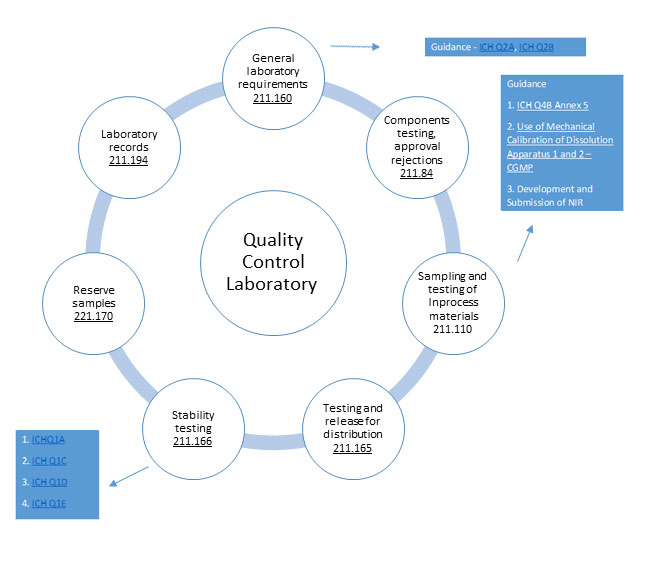Report on PFAS Contamination in New South Wales Water Catchments and Implications for Sustainable Development Goals
1.0 Introduction: A Challenge to Clean Water and Public Health
A recent parliamentary inquiry in New South Wales (NSW) has identified significant contamination of drinking water catchments with per- and poly-fluoroalkyl substances (PFAS), commonly known as “forever chemicals.” This situation presents a direct challenge to Australia’s commitment to the United Nations Sustainable Development Goals (SDGs), particularly SDG 6 (Clean Water and Sanitation) and SDG 3 (Good Health and Well-being). The findings reveal institutional shortcomings and raise public health concerns for residents in the Blue Mountains and other affected areas, undermining the core principle of ensuring access to safe water for all.
2.0 Key Findings of the Parliamentary Inquiry
The NSW Upper House committee investigation uncovered critical failures in water quality management, directly impacting the achievement of SDG targets.
- Institutional Failures: Sydney Water was found to have prematurely declared “no known PFAS hotspots” without conducting adequate testing, a failure of institutional accountability under SDG 16 (Peace, Justice and Strong Institutions).
- Detection of Contaminants: Subsequent testing confirmed the presence of PFAS in untreated water from Medlow Dam and other Blue Mountains sources, forcing the shutdown of smaller water supplies. This highlights a tangible setback for SDG 6, which aims to achieve universal and equitable access to safe drinking water.
- Expert Criticism: Water safety experts criticized the approach of treating drinking water guidelines as a “tick-box exercise” rather than a proactive measure to safeguard public health, a practice that conflicts with the preventative principles of SDG 3.
3.0 Health and Community Impacts: A Setback for SDG 3 and SDG 11
The presence of PFAS in water sources has profound implications for human and environmental health, affecting progress on multiple SDGs.
3.1 Public Health Concerns (SDG 3)
PFAS are linked to severe health conditions, which directly threatens the targets of SDG 3 (Good Health and Well-being). The primary health risks include:
- Increased risk of certain cancers
- Thyroid disease and hormonal disruption
- Immune system dysfunction
- Reproductive and developmental issues
The bioaccumulative nature of these “forever chemicals” means that exposure poses a long-term threat to community health.
3.2 Community Trust and Inclusion (SDG 11 & SDG 16)
The inquiry noted that affected communities felt uninformed and excluded from the decision-making process. This lack of transparency and participation undermines SDG 11 (Sustainable Cities and Communities), which calls for inclusive and resilient human settlements, and SDG 16, which advocates for responsive, inclusive, and representative decision-making at all levels.
4.0 Recommendations for Aligning with SDG Targets
The committee issued 32 recommendations aimed at rectifying the current failures and building a framework consistent with the SDGs. Key recommendations include:
- Implement routine and comprehensive PFAS testing across all NSW water catchments to ensure compliance with SDG 6.
- Improve coordination between state and federal agencies to create a more robust and accountable governance structure, in line with SDG 16.
- Offer voluntary blood testing for residents in high-risk areas to monitor and address health impacts, supporting the goals of SDG 3.
- Conduct a comprehensive review of how Australia implements drinking water guidelines to shift from a reactive to a proactive public health strategy.
5.0 Long-Term Solutions and Broader SDG Implications
Addressing the PFAS crisis requires a multi-faceted approach that extends beyond immediate remediation and aligns with broader sustainability objectives.
5.1 Responsible Consumption and Production (SDG 12)
A critical long-term strategy is to phase out PFAS in consumer and industrial products. This directly supports SDG 12 (Responsible Consumption and Production), which aims to achieve the environmentally sound management of chemicals and all wastes throughout their life cycle and significantly reduce their release to air, water, and soil.
5.2 Individual and Collective Action
To support progress, individuals and communities can:
- Request information from local water providers regarding PFAS testing and results.
- Utilize certified home water filtration systems designed to remove PFAS.
- Advocate for policies that restrict and eliminate the use of PFAS chemicals, contributing to the achievement of SDG 12 and SDG 6.
The findings in NSW serve as a critical reminder that ensuring access to clean, uncontaminated water is fundamental to achieving a sustainable and healthy future for all communities.
Sustainable Development Goals (SDGs) Analysis
1. Which SDGs are addressed or connected to the issues highlighted in the article?
-
SDG 3: Good Health and Well-being
- The article directly connects the presence of PFAS (“forever chemicals”) in drinking water to significant health concerns, including “cancer, thyroid disease, and reproductive issues.” The anxiety of residents and the call for voluntary blood testing underscore the direct impact on community health and well-being.
-
SDG 6: Clean Water and Sanitation
- This is the central theme of the article. The contamination of drinking water catchments in the Blue Mountains and New South Wales with PFAS chemicals directly compromises the safety of the water supply, challenging the fundamental goal of ensuring access to clean and safe water for all.
-
SDG 11: Sustainable Cities and Communities
- The article highlights how water contamination creates anxiety and undermines the safety and resilience of communities like those in the Blue Mountains. The issue affects the environmental quality of the settlement and the well-being of its residents, which is a key aspect of sustainable community development.
-
SDG 16: Peace, Justice and Strong Institutions
- The article critiques the actions and transparency of public institutions like Sydney Water. The findings of the parliamentary inquiry, criticism from experts about treating guidelines as a “tick-box exercise,” and the community feeling “let down” and “excluded from decision-making” all point to a need for more effective, accountable, and transparent institutions.
2. What specific targets under those SDGs can be identified based on the article’s content?
-
Target 3.9: By 2030, substantially reduce the number of deaths and illnesses from hazardous chemicals and air, water and soil pollution and contamination.
- The presence of PFAS, which are hazardous synthetic compounds linked to severe health issues, in drinking water is a direct form of water contamination that this target aims to address.
-
Target 6.1: By 2030, achieve universal and equitable access to safe and affordable drinking water for all.
- The discovery of PFAS contamination means the water is no longer considered safe, directly impeding progress toward this target for the affected residents of New South Wales.
-
Target 6.3: By 2030, improve water quality by reducing pollution, eliminating dumping and minimizing release of hazardous chemicals and materials.
- The article’s focus on PFAS levels in water catchments relates directly to this target’s goal of reducing pollution and minimizing the release of hazardous chemicals into the water supply.
-
Target 11.6: By 2030, reduce the adverse per capita environmental impact of cities, including by paying special attention to air quality and municipal and other waste management.
- Water quality is a critical component of a city’s or community’s environmental impact. The contamination discussed in the article represents a significant adverse environmental impact on the affected communities.
-
Target 16.6: Develop effective, accountable and transparent institutions at all levels.
- The criticism that Sydney Water prematurely declared the area safe and the committee’s 32 recommendations for better coordination and testing highlight a failure of institutional effectiveness and transparency.
-
Target 16.7: Ensure responsive, inclusive, participatory and representative decision-making at all levels.
- The article explicitly mentions that “Communities living near contaminated sites have reported feeling uninformed and excluded from decision-making,” which is a direct contradiction of the principles outlined in this target.
3. Are there any indicators mentioned or implied in the article that can be used to measure progress towards the identified targets?
-
Levels of PFAS in water:
- The article mentions that tests “revealed levels of PFAS in untreated water from Medlow Dam and other Blue Mountains sites.” This measurement is a direct indicator for monitoring water pollution (Target 6.3) and assessing water safety (Target 6.1). The recommendation for “routine PFAS testing across NSW” reinforces this as a key indicator.
-
Human exposure levels:
- The recommendation for “voluntary blood testing for concerned residents” implies using the concentration of PFAS in the human body as an indicator. This would measure the extent of human exposure and help assess the health risks related to chemical contamination (Target 3.9).
-
Institutional recommendations and implementation:
- The “32 recommendations” issued by the parliamentary committee serve as a qualitative indicator of institutional accountability (Target 16.6). Tracking the implementation of these recommendations, such as establishing better coordination between agencies and a comprehensive review of guidelines, would measure progress toward stronger institutions.
-
Community perception and participation:
- The article notes that the “community ‘felt let down'” and “uninformed and excluded.” While not a quantitative metric, community sentiment and involvement in decision-making are crucial qualitative indicators for measuring progress towards inclusive and responsive institutions (Target 16.7).
4. Table of SDGs, Targets, and Indicators
| SDGs | Targets | Indicators |
|---|---|---|
| SDG 3: Good Health and Well-being | 3.9: Substantially reduce illnesses from hazardous chemicals and water pollution. | Concentration of PFAS in voluntary blood tests of residents. |
| SDG 6: Clean Water and Sanitation | 6.1: Achieve universal access to safe drinking water. | Proportion of the population whose tap water meets safety standards (implied to be compromised). |
| 6.3: Improve water quality by reducing pollution and minimizing the release of hazardous chemicals. | Measured levels of PFAS in untreated water from catchments like Medlow Dam. | |
| SDG 11: Sustainable Cities and Communities | 11.6: Reduce the adverse per capita environmental impact of cities, including water quality. | Levels of chemical pollutants (PFAS) in the community’s water supply. |
| SDG 16: Peace, Justice and Strong Institutions | 16.6: Develop effective, accountable and transparent institutions. | The number of parliamentary committee recommendations (32) implemented, such as routine testing and agency coordination. |
| 16.7: Ensure responsive, inclusive, and participatory decision-making. | Qualitative reports of community feeling (e.g., “uninformed and excluded from decision-making”). |
Source: thecooldown.com







